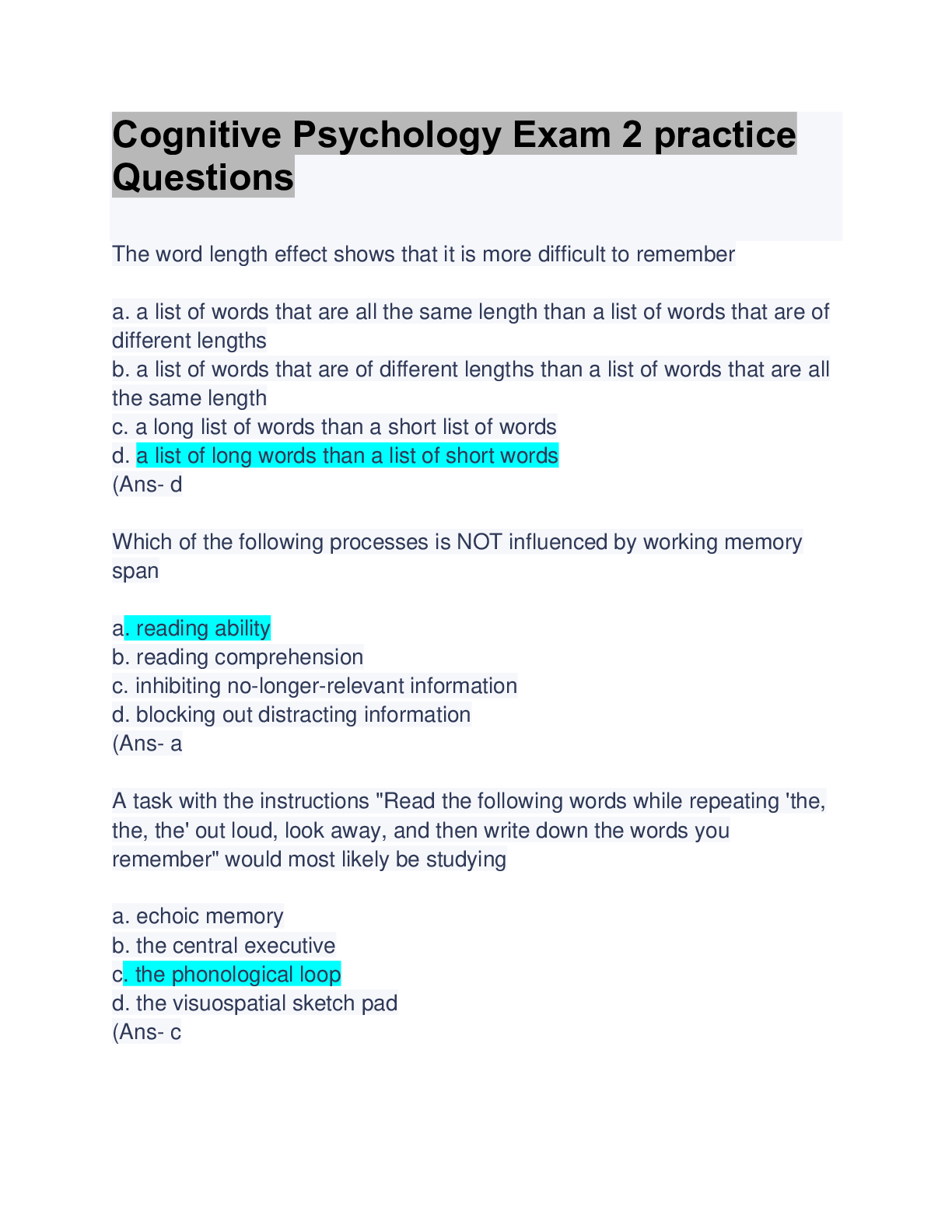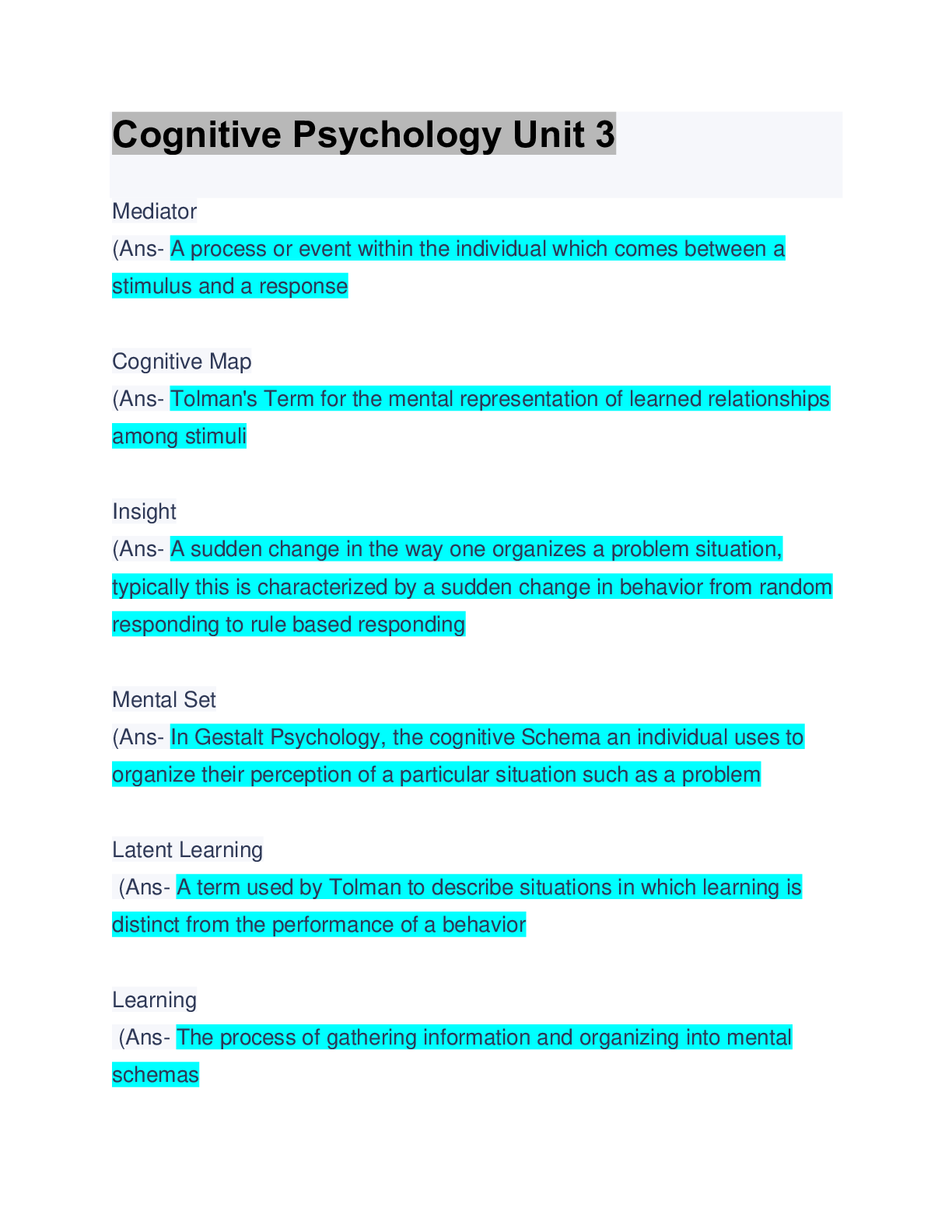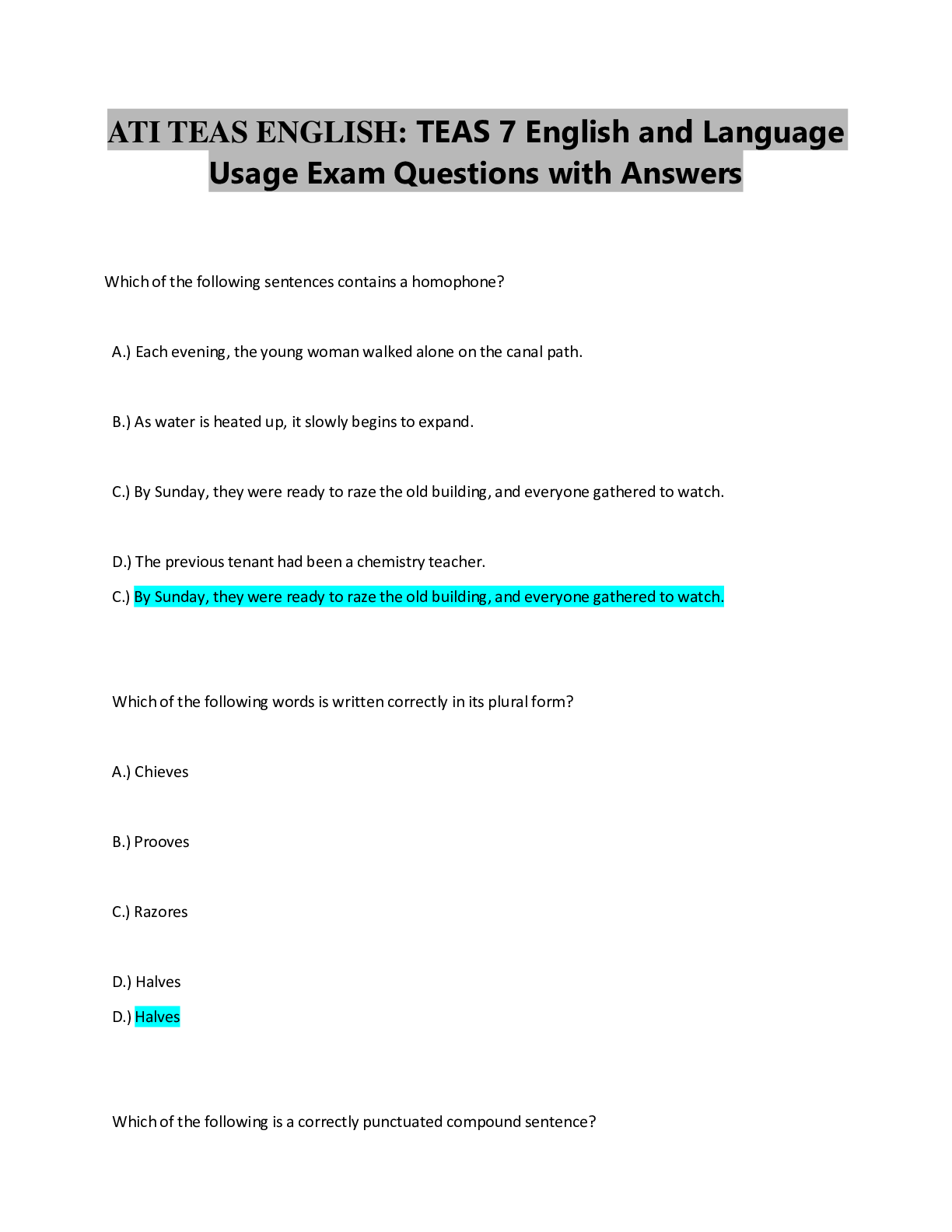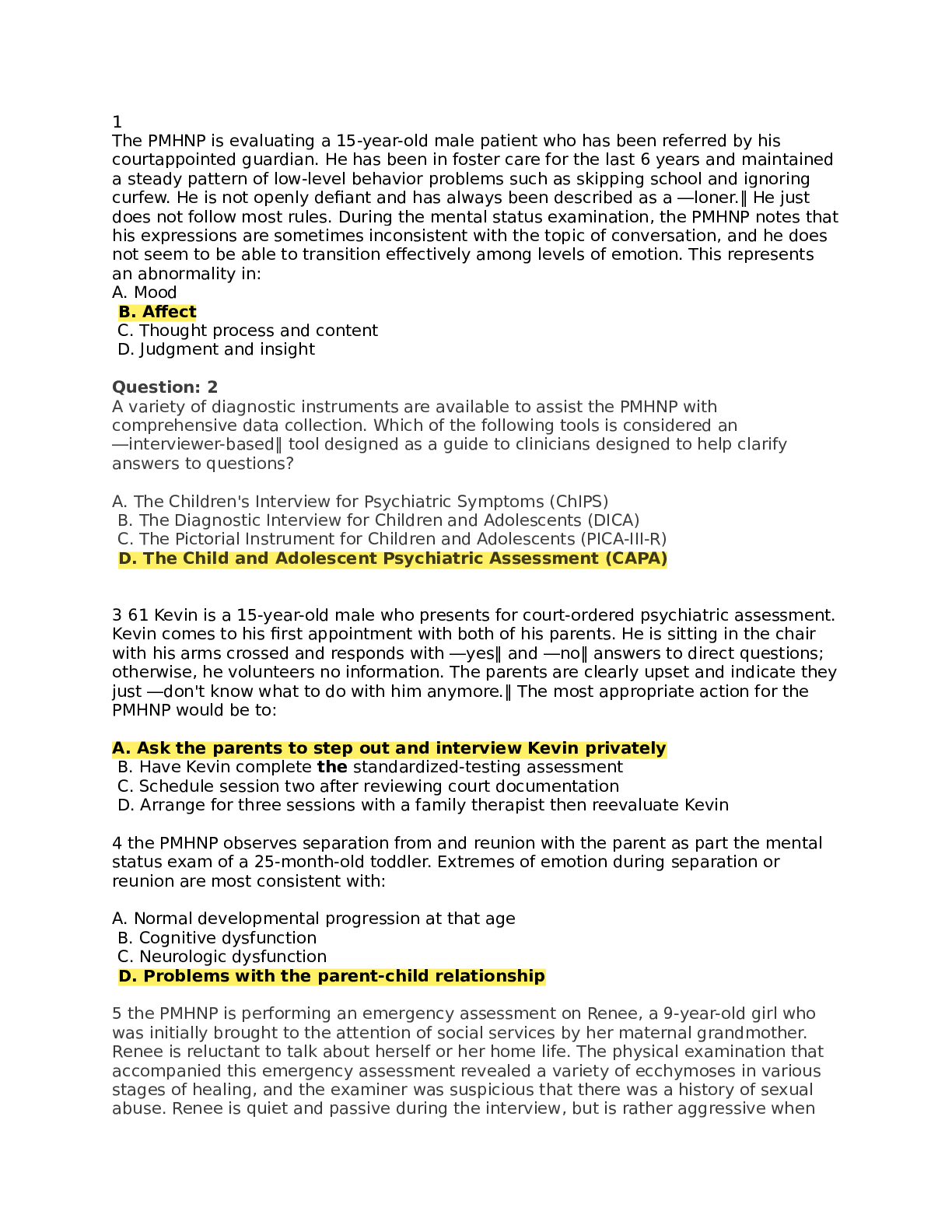Urban Policy and Planning > EXAM > SDI Scuba Exam: 100 % Verified Questions & Answers: Guaranteed APlus Guide (All)
SDI Scuba Exam: 100 % Verified Questions & Answers: Guaranteed APlus Guide
Document Content and Description Below
Which of the following is not true? A. Entering shallow water causes the base of a wave to slow. B. Entering shallow water forces wave energy upward, making the wave crest unstable and causing it to... break. C. If the top of a wave moves faster than the bottom, the wave will tend to break. D. Both the first and third answers are true. (Ans- B. Entering shallow water forces wave energy upward, making the wave crest unstable and causing it to break. Which of the following is/are true? A. Surge is the backwash of water from waves breaking on shore. B. Surge is the back-and-forth movement of water caused by waves passing over head. C. Surge occurs when waves force water between facing rock ledges. D. None of the above. (Ans- B. Surge is the back and forth movement of water caused by waves passing over head. Which (if any) of the following are true? A. Aquatic animals present a greater risk to divers than any other factor. B. Most aquatic animal bites result from an animal's defensive response to a perceived threat or, on rare occasions, from a case of mistaken identify. C. Because they are perceived as more aggres- sive, men are more likely to be the victim of an aquatic animal attack than women are. D. None of the above. (Ans- B. Most aquatic animal bites result from an animal's defensive response to a perceived threat or, on rare occasions, from a case of mistaken identify. To be injured by an animal with poisonous spines, you must: A. Be within a radius of 3 m/10 ft, as most poisonous animals cannot shoot their spines farther than this. B. Be the aggressor and touch the animal first. C. Be barehanded, as most spines cannot pass through gloves. D. None of the above. (Ans- B. Be the aggressor and touch the animal first. _________ buoyant items tend to float__________ buoyant items tend to sink, items that are __________ buoyant neither float nor sink. A. Negatively, neutrally, positively B. Positively, neutrally, negatively C. Positively, negatively, neutrally D. None of the above. (Ans- C. Positively, negatively, neutrally A scuba cylinder that normally lasts one hour at the surface will last _______ minutes at 20 m/66 ft. A. 30 B. 20 C. 15 D.10 (Ans- B. 20 If you feel pain or discomfort during descent: A. Stop, hold in place and equalize forcefully until your ears clear. B. Ascend to the point where you can comfortably equalize, and only then continue your descent. C. Abort the dive and consult a physician. D. Note the depth at which the pain occurred and conduct your safety stop there at the end of the dive. (Ans- B. Ascend to the point where you can comfortably equalize, and only then continue your descent. All of the following are true except: A. You can help prevent mask squeeze by exhaling periodically into your mask during ascent. B. Regular dental care and ensuring your teeth are free of gas spaces can help prevent tooth squeeze. C. If you experience a reverse block, descend to a point where the pain subsides, then ascend slowly while wiggling your jaw and swallowing. Repeat this process as needed until you can ascend without pain or discomfort. D. The danger in taking decongestants is that they may wear off during a dive and have other possible side effects. (Ans- A. You can help prevent mask squeeze by exhaling periodically into your mask during ascent. Any time you cannot inhale while scuba diving (such as when a regulator is out of your mouth), you must be: A. Holding your breath to conserve your remain- ing air. B. Exhaling. C. Monitoring your depth to avoid accidental ascents while breath holding. D. Both the first and third answers are correct. (Ans- B. Exhaling. All of the following can help prevent decompression sickness (DCS) except: A. Make a safety stop of between three and five minutes at a depth of 3 to 6 m/10 to 20 ft. B. Remain well within your dive computer's no decompression limit. C. Avoid drinking fluids prior to the dive. D. Ascend no faster than the rate allowed by the dive computer. (Ans- C. Avoid drinking fluids prior to the dive. Contributing factors to decompression sickness can include: A. Rapid ascents. B. "Pushing" or exceeding your computer's no decompression limits. C. Heavy exertion and/or dehydration. D. All of the above. (Ans- D. All of the above. [Show More]
Last updated: 9 months ago
Preview 1 out of 20 pages

Loading document previews ...
Buy this document to get the full access instantly
Instant Download Access after purchase
Buy NowInstant download
We Accept:

Reviews( 0 )
$7.50
Can't find what you want? Try our AI powered Search
Document information
Connected school, study & course
About the document
Uploaded On
Sep 19, 2024
Number of pages
20
Written in
Additional information
This document has been written for:
Uploaded
Sep 19, 2024
Downloads
0
Views
14

















.png)

 (1).png)
 (1).png)
.png)
.png)



